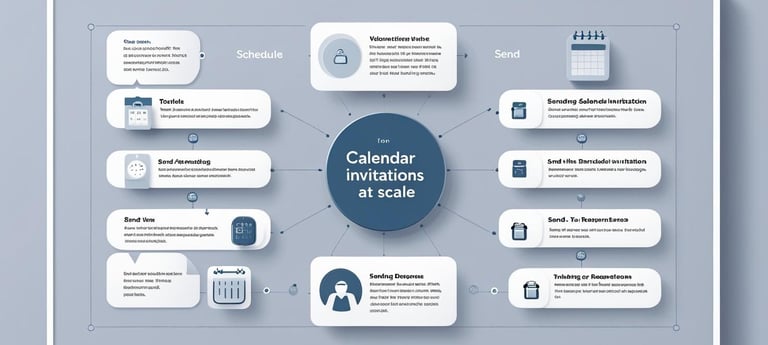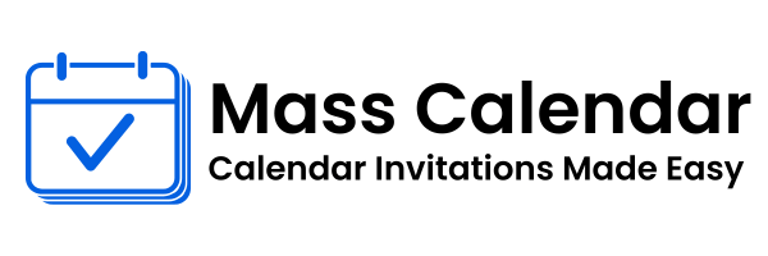The Art of Scheduling: A Guide to Smart Calendar Invites
Whether you’re leading a small team or managing enterprise operations, scheduling meetings is a constant. A well-prepared calendar invite can make all the difference between a productive session and a missed opportunity.
BLOG
7/16/20252 min read


Whether you’re leading a small team or managing enterprise operations, scheduling meetings is a constant. A well-prepared calendar invite can make all the difference between a productive session and a missed opportunity.
But in a world with multiple platforms and fast-moving schedules, how can you ensure your invites are effective, professional, and well-received? This guide explores the key elements of smart scheduling, including tips for both individual and calendar in bulk invitations.
What Makes a Good Calendar Invitation?
A professional calendar invitation should provide clarity, context, and convenience. At a minimum, it should answer these questions:
Who is the meeting with?
What is the meeting about?
When and where is it happening?
How can I prepare?
Even small oversights—like forgetting a video link or using an unclear title—can lead to confusion or poor attendance.
Step-by-Step: Sending Effective Invites
1. Define Your Goal
Before you send meeting invite in Gmail or Outlook, clarify your goal. Is this a brainstorming session, a performance review, or a client check-in? A clear purpose helps set expectations.
2. Write a Descriptive Title
Use a format that combines subject + purpose + group. Example: “Q2 Planning Call – Ops + HR Teams”
3. Include All Details
Make sure your invite includes:
Accurate time zone
Location or meeting link
Agenda (optional but helpful)
Attachments or reading materials
Outlook vs Gmail
If you're wondering, "how do I send a calendar invite in Outlook," the process includes creating a new meeting event, setting time, and inviting participants. It's user-friendly and widely used in corporate environments.
Similarly, to send calendar invite Gmail, use Google Calendar to set up the meeting, adjust permissions, and send RSVPs. Each platform supports features like time suggestions and notification settings.
Managing High-Volume Scheduling
Sending a calendar in bulk is different from one-on-one scheduling. It requires precision and strong organization. For example:
A department-wide meeting invite
An all-hands quarterly update
Large-scale webinar or conference session
In such cases, managing a bulk calendar invite strategy means segmenting your audience, ensuring accurate contact lists, and sending consistent information. Always double-check calendar formats to ensure compatibility.
Using Add-to-Calendar Features
An “add to calendar” link in a confirmation email or website is a simple yet powerful tool. It lets users automatically populate their calendar with the event details in just one click—no copying or typing required.
This feature is especially helpful when dealing with external guests, large audiences, or repeat sessions.
Respecting Time and Etiquette
Even when you’re under pressure to fill up calendars, remember:
Don’t overschedule
Avoid back-to-back slots
Allow room for prep and follow-up
Always send updates if changes occur
The best calendar invitation Outlook or Gmail entries balance structure with flexibility.
Conclusion
Scheduling is more than just picking a time—it’s about creating space for meaningful collaboration. Whether you’re sending one invite or managing an invite calendar for a large team, thoughtful preparation goes a long way.
With the right structure, platform knowledge, and respect for others’ time, your calendar invites can become a tool for success, not just a time-block on the screen.
MassCalendar.in
Send Bulk & Mass Calendar Invites Instantly
CONTACT
Meetings
+44 (0) 203 916 5117
© 2025. All rights reserved.
Help?
